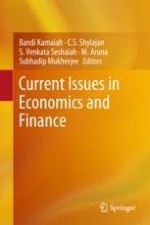2017 | OriginalPaper | Buchkapitel
Is the Acquirer More Efficient Than Target? An Empirical Study from Selected Bank Consolidation in India
verfasst von : M. Kollapuri
Erschienen in: Current Issues in Economics and Finance
Verlag: Springer Singapore
Aktivieren Sie unsere intelligente Suche, um passende Fachinhalte oder Patente zu finden.
Wählen Sie Textabschnitte aus um mit Künstlicher Intelligenz passenden Patente zu finden. powered by
Markieren Sie Textabschnitte, um KI-gestützt weitere passende Inhalte zu finden. powered by
